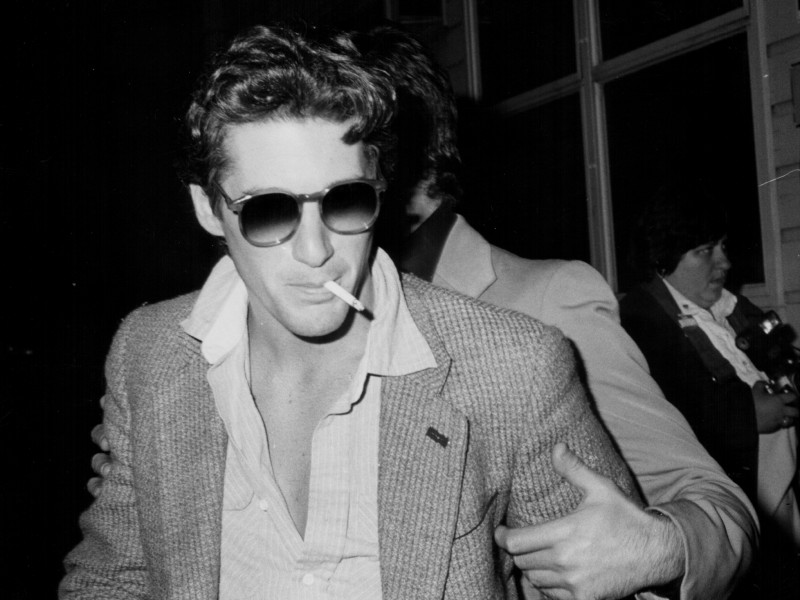Clothing is a visual language, a colourful and tactile lexicon that creates an impression without ever saying a word. Function aside, it is why women and men have adorned themselves with exotic fabrics for thousands of years. As a species with a proclivity towards brevity, it would seem only fitting for Jakob Schlaepfer to assume the role of orator on our collective behalf.
Jakob Schlaepfer is a quiet yet incredibly influential voice in contemporary fashion. A strange paradox considering the textile house has conspired with some of the world’s greatest art and fashion luminaries for over 112 years. One only has to see the fabrics that beset the red carpets of Festival de Cannes and the Oscars, or pick up an issue of Vogue to reveal the depth and breadth of their output—an enigmatic polyphony of design, creativity and innovation.
The firm was founded in 1904 by Rudolf Vogel in the idyllic Swiss Canton of St. Gallen. The area built its reputation in textiles in the 16th century, when local artisans were employed to make linen used to bind the Gutenberg Bible, being produced en masse in Germany. The region is at an elevation suitable for the production of flax, so much so that the fields of St. Gallen were said to glisten white during this period. The fabric laid out to bleach was commonly referred to as ‘white gold’ due to the wealth it bestowed on the town—an evocative image considering the magnitude of bespoke luxury fabrics that are still produced there.
Jakob Schlaepfer produce six collections a year each with approximately 200 textile designs in every collection. The distinguished textile company has woven textiles and masterful fabrics for the likes of Christian Dior, Chanel, Yves Saint Laurent, Jean Paul Gaultier, Oscar de la Renta and Maison Margiela to name a few. Supporting this prolific output, an estimated 60,000 fabrics hang in their archives awaiting the inquisitive minds and deep pockets of their famed clientele. Their monumental archives could be considered a real life treasure chest, a surviving Library of Alexandria for the creative pilgrims of the fashion world. Award-winning creative director Martin Leuthold told T Magazine, “A lot of designers come here for the archives”. One can only imagine the alchemy of creativity and imagination that goes into the process of choosing from such a colossal folio. “There are 600 years of embroidery history in St. Gallen. We know that if you have seen a fabric in fashion, it’s old,” Leuthold says. And while prestigious couturiers are known to make frequent pilgrimages to the house in search of inspiration, pop icons such as Lady Gaga have been spotted scouring their collections for inspiration and reference.
The longevity of Jakob Schlaepfer is perhaps testament to its curious relationship with innovation and technology. Having long embraced the changes and challenges of a tumultuous textile fashion industry, the firm has learnt many valuable lessons over its tenure: from a battery of strong foreign competition and reforms in methods of cotton production, to domestic competition from those determined to mimic their technical prowess. Innovation is always underpinning their chameleon like approach to adaptation.
Speaking on this point at the 2012 symposium Revolutionary Textiles, Camilla Ornella Bernbach, a senior designer at the house said that, “Sequins are the foundation on which Jakob Schlaepfer was built”. Having purchased the global rights to industrial sequin embroidery on shuttle machinery in 1963, Bernbach said that this milestone “put the name of Jakob Schlaepfer out there in the world”. And while their sequins and textiles can been seen atop the runways of Chanel, Miu Miu and Louis Vuitton, it is not until you review the long list of patent titles owned by Jakob Schlaepfer (if you are so inclined) that you appreciate how responsive the company has been over its history: Apparatus for forming a pattern of articles on a substrate; Apparatus for transferring and placing decorative articles; or, Applique machines, that is, “An embroidery and applique machine having a number of article feeding modules, each adapted to supply articles such as sequins which are to be appliqued in alignment with a needle”. The list goes on.
Jakob Schlaepfer were amongst the first to adopt computer aided technology as early as the 1960s and graphic design software in the 1980s—a technology that was considered radically modern at the time. In 2001 the firm set up their renowned Inkjet department that many of the world’s most prestigious maisons aspire to emulate. Their advances in laser cutting technology aside, each new technology brings with it the resources, knowledge and vision to dream of that which doesn’t yet exist.
By any measure, fashion and textile manufacturing is one of the most challenging and fluctuating of global industries. Subject to the ebbs and flows of consumer tastes and with a supply chain that responds to both wholesale and retail environments, Jakob Schlaepfer’s ability to reconcile design and demand has been one of the firms greatest strengths. Innovations such as ‘fantasy fabrics’—that is fabrics so plush with colour and texture that designers are often at a loss as to what to do with them—are no doubt as demanding to design as they are to sell, but sell they do. With prices in excess of $1,000 a metre, only the most masterful ateliers dare to unfurl each precious roll.
Creative director Martin Leuthold, is one of the minds driving such inventions. Leuthold began at Jakob Schlaepfer in 1971 at the impressionable age of 20, aspiring to acquire the skills of his well-versed seniors. He is known for his magnitude in talent and his equally astonishing modesty. Working with the world’s most prominent designers has turned him into one of the most well-respected figures in fashion. He is often excited by his inventions and enjoys the exchange of knowledge involved in the learning processes. Leuthold leads a young team, inspiring and igniting the creative process of designing fabric. He believes in the nurturing and acquisition of young talent in order to keep the ideas fresh and energised, “The digital world is in their genes. When we combine their imagination with our input, all sorts of possibilities arise!” Leuthold told UBS magazine.
Freed from the shackles of convention, in-house designers are encouraged to unleash their imaginations to establish outcomes that demand audacious experimentation—a process that yields the eccentric novelties that visionaries like Karl Lagerfeld are attracted to. “We make semi-finished goods. As soon as we’ve sold them, they’re labelled Chanel, Dior, YSL, Westwood or Marc Jacobs. It’s good to know they end up in the best hands. That takes the pressure off us.” Leuthold is a man who holds his design cards close to his chest, always careful not to divulge too much information about the exclusivity of his most prominent client’s fabric selections. Preferring instead to talk about the successes and legacy of the company as a whole; “The Queen of England also frequently wears our fabrics,” he told UBS Magazine.
To maintain the exacting standards and culture of exclusivity demanded by contemporary couturiers, the great creative directors of Jakob Schlaepfer’s clientele will typically only begin the process of ideation once they are guaranteed that a Jakob Schlaepfer textile will be exclusive to their brand. Each is acutely aware of the standards of their patrons, along with their panache for investing in the most unique and bespoke. Curiously and perhaps more entrepreneurially, Jakob Schlaepfer will retain the rights to reproduce a textile in any style they choose following the release of any given collection. It would appear that mutation, rather than invention, now defines the cutting edge.
In celebrating the prolific output of the firm, Bernbach attests that, “There’s always something simmering in the corner, something brewing in a cauldron, something that requires more ingredients”. This investment in experiment is known to evolve into “lovely accidents” that often stimulate the pursuit of creative experimentation. In one such incident, a bed of sequins fell into a full washing machine, the solution wearing away the fabric of the machines contents to leave only glitter clinging to loose threads of yarn, “almost like knitwear or fish scales,” joked Bernbach. Serendipity aside, these accidents have produced fabrics laced with aluminium, copper and bronze, weighing just 10 grams per yard, which incidentally Raf Simons purchased for one of his celebrated Dior collections.
In a world at the apex of change, both socially and technologically, Jakob Schlaepfer’s recipe for success may seem counter-intuitive. As a centenarian company at the wholesale end of a fashion industry currently running on overdrive, notions of artisanship, invention, time and authenticity still prevail. Acknowledging the need to remain nimble and responsive, Leuthold told UBS Magazine, “We’ve had to reinvent ourselves every time our products became too expensive. Tradition combined with high tech. That’s what we’re known for around the world. We’re seen as highly innovative. It’s important that we believe in our success.”
Jakob Schlaepfer’s commitment to innovation, artisanship and design has secured their place as artisanal pioneers at the forefront of their industry. Through a combination of local culture, textile tradition and future-oriented design, theirs is an oeuvre that unlike the fast fashion’s thinly veiled promises, delivers through actions rather than words.
For more visit jakob-schlaepfer.ch
Related Features
-
119
-
-
-

